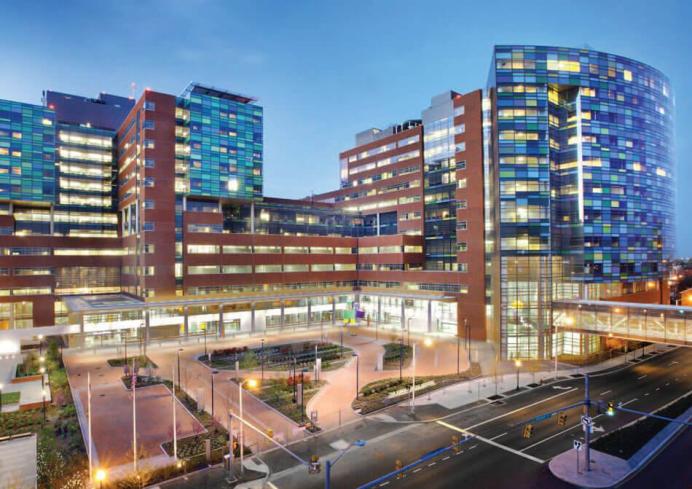
约翰·霍普金斯医学院博士后研究员–蛋白质生物化学、分子和细胞生物学
Employer: Department of Neurology, Institute for Cell Engineering, Johns Hopkins School of Medicine
Location: Baltimore, MD21205, USA
Type: Postdoctoral Fellow
Position Overview: A postdoctoral fellow position is immediately available in the laboratory of Dr. Hanseok Ko in the NeuroRegeneration and Stem Cell Programs, Institute for Cell Engineering, Department of Neurology, Johns Hopkins University School of Medicine. There are ample opportunities to interact and collaborate with other scientist at NeuroICE and the School of Medicine.
Lab introduction: The overarching goal of our scientific work has been to define key molecular pathways in the pathogenesis of neurodegenerative diseases including PD, DLB/PDD, and AD, and to identify novel targets for therapeutic development. Our lab is focused on pathways that are critical for understanding the neurodegenerative process as follows:
1. Defining the role and molecular characteristics of neuroinflammation in PD, DLB/PDD, and AD.
2. Deciphering the role of the disease-causing/risk genes (alpha-synuclein, GBA1, VPS35, LRRK2, Abeta, Tau, and APOE4) in the pathogenesis in PD, DLB/PDD, and AD.
3. Mechanism that underlies neuron to neuron transmission of pathologic alpha-synuclein or gut to brain transmission of pathologic alpha-synuclein and development of the gut-brain alpha-synuclein transmission mouse model.
4. The downstream neurotoxic effects of aggregated alpha-synuclein proteins with emphasis on oxidative stress, mitochondrial dysfunction, and the autophagic / lysosomal degradation system.
5. Mechanisms that initiate and govern the conformational conversion of soluble alpha-synuclein proteins into insoluble amyloid fibrils.
Recent articles related with the current projects:
1. Seo BA, Kim D, Hwang H, Kim MS, Ma SX, Kwon SH, Kweon SH, Wang H, Yoo JM, Choi S, Kwon SH, Kang SU, Kam TI, Kim K, Karuppagounder SS, Kang BG, Lee S, Park H, Kim S, Yan W, Li YS, Kuo SH, Redding-Ochoa J, Pletnikova O, Troncoso JC, Lee G, Mao X, Dawson VL, Dawson TM, Ko HS. TRIP12 ubiquitination of glucocerebrosidase contributes to neurodegeneration in Parkinson’s disease. Neuron. 2021 109(23):3758-3774.e11. PMID: 346445453.
2. Kim S, Kwon SH, Kam TI, Panicker N, Karuppagounder SS, Lee S, Lee JH, Kim WR, Kook M, Foss CA, Shen C, Lee H, Kulkarni S, Pasricha PJ, Lee G, Pomper MG, Dawson VL, Dawson TM, Ko HS. Transneuronal Propagation of Pathologic alpha-Synuclein from the Gut to the Brain Models Parkinson’s Disease. Neuron. 2019,103(4):627-641.e7. PMID: 31255487
3. Yun SP, Kam TI, Panicker N, Kim SM, Oh Y, Park JS, Kwon SH, Park YJ, Karuppagounder SS, Park H, Kim S, Oh N, Kim N, Lee S, Brahmachari S, Mao X, Lee JH, Kumar M, An D, Kang S, Lee Y, Lee KC, Na DH, Kim DH, Lee SH, Roschke VV, Liddelow SA, Mari Z, Barres BA, Dawson VL, Lee S, Dawson TM and Ko HS. Block of A1 astrocyte conversion by microglia is neuroprotective in models of Parkinsons disease. Nat Med. 2018 Jul;24(7):931-938. PMID: 29892066.
4. Mao X, Ou MT, Karuppagounder SS, Kam TI, Yin X, Xiong Y, Ge P, Umanah GE, Brahmachari S, Shin JH, Kang HC, Zhang J, Xu J, Chen R, Park H, Andrabi SA, Kang SU, Goncalves RA, Liang Y, Zhang S, Qi C, Lam S, Keiler JA, Tyson J, Kim D, Panicker N, Yun SP, Workman CJ, Vignali DA, Dawson VL*, Ko HS*, Dawson TM*. Pathological alpha-synuclein transmission initiated by binding lymphocyte-activation gene 3. Science. 2016, 353(6307):aah3374. PMID: 27708076. *Co-Corresponding Author.
Position Requirements:
1. Highly motivated individuals with a PhD or MD/PhD degree in the field of protein biochemistry, molecular and cellular biology and a solid background in neuroscience or neuroimmunology.
2. Work experiences with transgenic or knock-out/knock-in mouse models relevant to neurological disorders and gene editing, stereotaxic surgery, viral vectors, optogenetics, RNAseq, single-cell RNAseq, and microscopy are preferred.
3. Less than two years of postdoctoral training are preferred.
Application Process:
Please email the following items to Dr. Hanseok Ko at hko3@jhmi.edu
1. CV including detail technical expertise and PubMed links.
2. Cover letter including brief statement of achievements and research interests,
3. Contact information for three references (Reference letters are not required for an initial inquiry).













